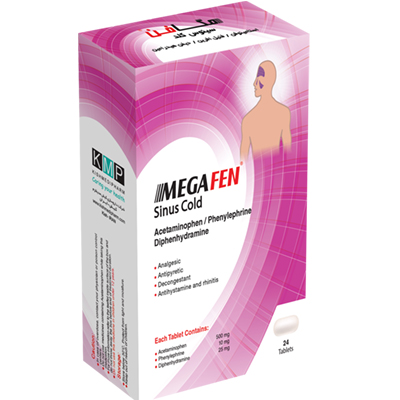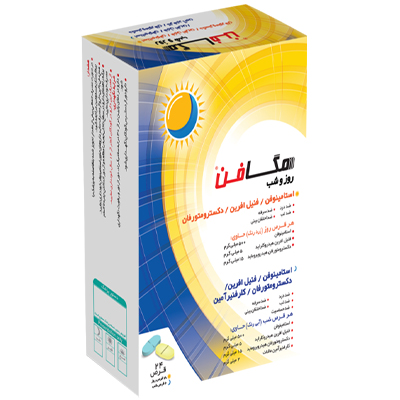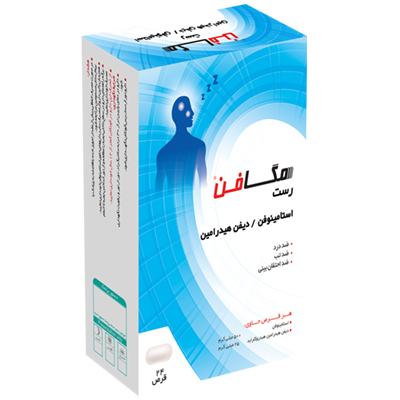Skin diseases are sometimes so similar in appearance that it is difficult to distinguish them without careful clinical and paraclinical examination. Among them, psoriasis, seborrheic dermatitis, eczema, and cutaneous lupus are four common inflammatory disorders that are sometimes confused with each other. In the following, the fundamental differences between these diseases are examined to gain a better understanding of their origin, symptoms, and treatment path.
By reading this article, you will be able to fully understand the exact difference between psoriasis and common skin diseases such as seborrheic dermatitis, eczema, and cutaneous lupus. Each of these diseases has its own signs and symptoms that may sometimes seem similar, but in essence, there are important differences between them that make proper diagnosis essential.
Scientific and clinical review of the similarities and differences between psoriasis and seborrheic dermatitis
Skin disorders not only affect a person's physical health, but also affect the psychological, social, and aesthetic aspects of daily life. Among these diseases, psoriasis and seborrheic dermatitis are among the most common and at the same time confusing skin disorders that may be misdiagnosed due to the sharing of some symptoms. A clear understanding of the difference between psoriasis and seborrheic dermatitis is crucial not only for dermatologists, but also for patients and their companions.
What is psoriasis?? is a chronic autoimmune disorder characterized by the overgrowth of epidermal cells. In this condition, the body's immune system mistakenly mistakes healthy skin cells as invaders and attacks them. The result of this abnormal response is severe inflammation, redness, itching, and the formation of thick, scaly, silvery plaques on the skin.
Psoriatic plaques most often appear on areas of high pressure or friction, such as the elbows, knees, scalp, lower back, and sometimes the palms of the hands and feet. However, involvement in less common areas, such as the nails, genitals, or inside the mouth, has also been reported.
From a histological perspective, this disease is characterized by epidermal hyperplasia, dermal inflammation, and immune cell infiltration. One of the most important points in the difference between psoriasis and seborrheic dermatitis is precisely in its immune-driven mechanism, where disruption of the T-helper 1 and 17 cell pathways plays a role in psoriasis.
Seborrheic dermatitis; inflammation related to sebum and skin fungi
On the other hand, seborrheic dermatitis, or seborrheic dermatitis, is a chronic inflammatory condition that often occurs in areas with a high density of sebaceous (oil) glands. Common areas of occurrence include the scalp, behind the ears, around the nose, eyebrows, chest, and the area between the shoulder blades. Unlike psoriasis, which is autoimmune in nature, seborrheic dermatitis is more likely to be associated with an overgrowth of a fungus called Malassezia and abnormal activity of the skin's sebaceous glands.
In appearance, yellow, greasy, shiny scales are the main characteristics of this disease. Itching and inflammation are also seen in the acute or chronic stages. These scales are often softer than psoriatic scales and are easier to remove with washing or topical treatments.
Similarities; Why are psoriasis and seborrheic dermatitis often confused?
Although psoriasis and seborrheic dermatitis differ in their origin, appearance, and treatment, their superficial similarities can confuse patients. Both are chronic conditions that often affect the scalp, around the nose, eyebrows, and ears. In both cases, the person experiences scaling and inflammation that may be accompanied by itching, burning, or skin sensitivity.
In addition, psychological stress, seasonal changes, and immune disorders are common triggers for both conditions. In many patients, the onset of symptoms is gradual, and in the early stages, it is difficult to accurately distinguish between the two disorders, especially when the lesions are limited to the scalp.
The common coverage of oily areas of the body and the similar appearance pattern of scales, although with subtle differences in color, thickness, and texture, are other reasons why the difference between psoriasis and seborrheic dermatitis is not easily recognized at first glance. This is why careful clinical examinations and, in some cases, skin sampling (biopsy) are necessary for definitive differentiation.
Key differences between seborrheic dermatitis and psoriasis
- Origin and etiology of the disease: In psoriasis, dysregulation of the immune response plays a central role. Abnormal cellular pathways lead to rapid and uncontrolled production of skin cells. However, seborrheic dermatitis is mainly the result of Malassezia fungal activity and increased sebum secretion in the skin.
- Clinical appearance of scales: Psoriasis scales are dry, silvery, thick, and flaky, while seborrheic dermatitis scales are often oily, yellowish, and softer. This difference between psoriasis and seborrheic dermatitis can be diagnosed by a healthcare professional by directly observing and feeling the skin.
- Location of lesions: Although both diseases involve the scalp, Scalp psoriasis It can extend beyond the hairline and spread to the forehead and behind the ears. Seborrheic dermatitis is usually limited to oily, hairy areas.
- Response to treatment: Treatment for psoriasis usually requires the use of stronger topical medications such as corticosteroids, vitamin D analogues, and in more severe cases, systemic medications or biologics. In contrast, treatment for seborrheic dermatitis is often successful with antifungal shampoos, sebum-reducing medications, and mild anti-inflammatory creams.
- Family history and association with other diseases: Another type of difference between psoriasis and seborrheic dermatitis is usually a positive family history and association with diseases such as: Psoriatic arthritis, metabolic syndrome, and cardiovascular diseases are observed. However, seborrheic dermatitis is not significantly associated with such comorbidities.
Differences in treatment and specialized care for psoriasis and seborrheic dermatitis
Recognizing the difference between psoriasis and seborrheic dermatitis is a prerequisite for initiating targeted and effective treatment, which can only be done by a specialist. For psoriasis, treatment options fall into three main categories:
- Topical treatments: Includes corticosteroids such as Megacort ointment and Megacort cream, vitamin D analogues, coal, and salicylic acid.
- Systemic treatments: Includes methotrexate, cyclosporine, acitretin.
- Biological treatments: Targeting specific immunological pathways with drugs such as exkizumab, secinumab, adalimumab.
- Shampoo for scalp psoriasis: Continuous use of The best shampoos for psoriasis The head not only reduces the symptoms of the disease, but also prevents the rapid return of plaques and helps the patient have a better quality of life.
Seborrheic dermatitis is usually controlled with more non-invasive methods:
- Regular use of antifungal shampoos (such as ketoconazole, selenium sulfide)
- Mild topical anti-inflammatory medications
- Regular washing with lukewarm water and reducing stressors
Tips on prevention and long-term management
- Maintaining personal hygiene and using detergents suitable for sensitive skin
- Avoiding triggers such as dry air, mental stress, alcohol consumption, and tobacco.
- Proper nutrition for psoriasis, including anti-inflammatory foods rich in omega-3
The differences between psoriasis and seborrheic dermatitis are striking not only in clinical appearance, but also in immunological origins, treatment modalities, and even long-term consequences. Ignoring these differences can lead to incorrect prescription, frequent relapses, and even worsening of the patient's condition.
A comprehensive review of the difference between eczema and psoriasis
The difference between eczema and psoriasis is one of the most challenging topics in dermatology; because the external symptoms of these two diseases are very similar to each other and in many cases they are mistakenly considered to be one and the other even by patients or non-specialists. This section examines the structural, clinical, etiological and therapeutic differences between these two diseases. Understanding the difference between eczema and psoriasis becomes important when we want to diagnose the type of disease based on the appearance of the skin and the location of the lesion.
| Eczema | Psoriasis | Features |
| Red, inflamed, sometimes with blisters or discharge | Red with thick silver scales | Skin appearance |
| Creases (behind the knees, inside the elbows), neck, wrists | Elbows, knees, scalp, lower back | Common place of conflict |
| Very intense | Usually moderate, sometimes severe | Itching severity |
| Scattered and irregular | Clear, distinct, and round or oval | Lesion shape |
| Itching, burning, mild pain | Itching, sometimes pain and burning | Feeling sick |
The difference between eczema and psoriasis in physiology
One of the most important aspects of distinguishing between these two diseases is their pathological causes. When examining the difference between eczema and psoriasis, one must also pay attention to physiology and immunology.
Eczema: An overactive immune system response to stimuli, often caused by an overactive immune system response to allergens or environmental stimuli. Exacerbating factors for this condition include detergents, foods, stress, dust, heat, and sweating. It is associated with disruption of the skin's defense barrier and loss of moisture.
Psoriasis: A mistaken attack by the immune system on self-cells, where the immune system mistakenly mistakes healthy epidermal cells as the enemy, causing chronic inflammation. This reaction reduces the skin cell renewal cycle, which normally takes 28 days, to just 3 to 7 days. Psoriasis triggers These include infections, medications, stress, skin damage, and cold.
Similarities and why they are confused: eczema and psoriasis
Despite the fundamental differences, there are also similarities between these two diseases that make diagnosis difficult:
- Severe itching is reported in both diseases.
- Red skin lesions and visible inflammation.
- Periods of relapse and remission, making both diseases chronic and unpredictable.
- Scalp involvement in both diseases, which can cause scaling and resemble severe dandruff.
These similarities make distinguishing between eczema and psoriasis challenging for patients and sometimes even for general practitioners.
The role of examination and tests in differentiating between eczema and psoriasis
A thorough clinical examination and sometimes a skin biopsy are necessary for a correct diagnosis. A specialist can help differentiate between these two diseases and determine the difference between eczema and psoriasis based on the following:
- Appearance and location of the lesion
- Family history of allergic or autoimmune diseases
- Response to previous treatments
- Blood and skin tests (in certain cases)
Eczema and psoriasis treatment
One important area of difference between eczema and psoriasis is their different treatment methods:
Eczema treatment:
- Strong moisturizing creams to rebuild the skin barrier
- Topical corticosteroids to reduce inflammation
- Using moisturizing covers at night
- Antihistamines to control itching
- Avoiding triggers
Medications that are effective for treating eczema are not necessarily effective for psoriasis, and vice versa.
Prevalence of eczema and psoriasis in children and the elderly
In children, eczema is more common and often appears between the ages of six months and five years. Psoriasis in children It is rarer, but when it does occur, it usually begins with nail or scalp involvement. In the elderly, it is more difficult to tell the difference between eczema and psoriasis because their skin is naturally dry and thin, and reactions will be different.
Cutaneous lupus and psoriasis
One of the most frequently asked questions in this field is the distinction between cutaneous lupus and psoriasis. Paying close attention to the appearance and systemic differences between cutaneous lupus and psoriasis is of great importance to prevent misdiagnosis and choose the correct treatment path.
Both cutaneous lupus and psoriasis are chronic autoimmune diseases, but they have distinct differences in their origin, pattern of lesions, and involvement of body systems. In cutaneous lupus, the body's immune system attacks healthy tissue, primarily affecting the skin, joints, kidneys, and sometimes internal organs. The most common cutaneous form is discoid lupus, which presents with red, raised, and sometimes ulcerated plaques on sun-exposed areas (cheeks, nose, ears).
In contrast, psoriasis is a disease that is mainly confined to the skin and is associated with the abnormal proliferation of epidermal cells. Dry, silvery, itchy plaques usually appear on the elbows, knees, scalp, and lower back.
| Features | Cutaneous lupus | Psoriasis |
| Nature of the disease | Autoimmunity, systemic involvement | Autoimmune, predominantly cutaneous involvement |
| Appearance of lesions | Red, butterfly-like rash on face, may become ulcerated | Thick, scaly, silvery or white |
| Common place of conflict | Face, ears, hands | Elbows, knees, scalp, lower back |
| Sensitivity to sunlight | Very high | Usually has less impact |
| Risk of damage to internal organs | Yes | In psoriatic arthritis, the joints |
| Differential diagnosis | Need for ANA test and skin biopsy | Based on clinical appearance and sometimes skin biopsy |
Conclusion
Distinguishing between inflammatory skin disorders requires high precision, specialized knowledge, and in many cases, complementary testing. The visual symptoms of most common diseases, such as psoriasis and seborrheic dermatitis, eczema and psoriasis, and cutaneous lupus and psoriasis in the early stages, overlap so much that accurate decisions cannot be made based on appearance without clinical and laboratory examinations.
From a pathophysiological perspective, psoriasis is an autoimmune disease with disruption of specific cellular pathways that primarily affects the skin and is characterized by thick, silvery, chronic plaques. In contrast, seborrheic dermatitis is caused by overactivity of the sebaceous glands and fungal growth that produces yellow, greasy, and inflamed scales. The similarity in the location of the lesions, namely, oily areas of the body, especially the scalp, is a major factor in misdiagnosis of the two diseases.
The difference between eczema and psoriasis is also quite significant in the immunological causes, the location of involvement, and the appearance of skin lesions. Eczema is more associated with allergic reactions and skin barrier disorders, while in the difference between eczema and psoriasis, genetic factors and immune disorders play a more prominent role in psoriasis.
Ultimately, cutaneous lupus and psoriasis, despite sharing an autoimmune origin, follow completely different paths in the body. Lupus is associated with systemic involvement and high sensitivity to sunlight, while psoriasis remains largely confined to the skin. Correct and timely diagnosis is key to effective treatment and to reducing the psychological, physical, and social complications of these disorders.




